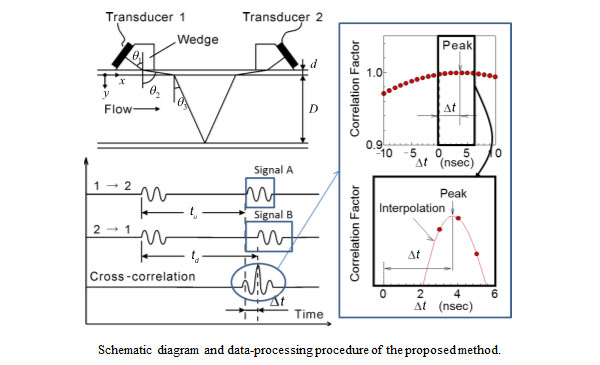Volume 45 Number 4 (2014.12)
Special Feature
CAE and Simulation
Part I. Special Feature
Overview
Research Reports
-
2. Computational Prediction of Macroscopic Mechanical Behavior in Multi-constituent Steels
 (3,905kB)
(3,905kB)pages 1-10
Noritoshi Iwata, Ikumu Watanabe, Daigo Setoyama and Takamichi Iwata

Our recent research on computational predictions of macroscopic mechanical behaviors in multi-constituent steels is reviewed, where a computational approach based on the finite element method is employed to model the heterogeneity at a micro scale and to relate the deformation state of the microstructure to the macroscopic mechanical behavior. Advanced constitutive models are developed to characterize the anisotropy of the plastic mechanical behaviors. The morphology effect of the ferrite–pearlite duplex microstructure on the macroscopic property is investigated by comparing the simulations and experiments.
-
pages 11-20
Masahide Inagaki

A new subgrid-scale (SGS) model for Large Eddy Simulation (LES) of thermal/passive scalar field is proposed. The performance of the proposed model is tested in plane channel flows at various Prandtl numbers of up to 95 and in the thermal entrance problem in a pipe flow. The results demonstrate the superiority of the present model as compared to conventional SGS models, which is remarkable when using a coarse grid at a high Prandtl/Schmidt number.
-
pages 21-31
Matsuei Ueda, Kazuhisa Inagaki, Yusuke Takasu and Toshihiro Tani

The purpose of the present study is to investigate a diesel combustion model and a total engine system model by combining the combustion model and a control model. The developed model was capable of predicting the performance over a wide operation area for a transient condition.
-
pages 33-42
Shunsuke Yamakawa, Ryoji Asahi and Toshiyuki Koyama

The phase-field method was employed to investigate surface segregation in transition metal-platinum binary alloy nanoparticles used as a cathode electrocatalyst in a polymer-electrolyte fuel cell (PEFC). The results reveal that the compositional variation within a particle depends on the balance between the atomic interactions within particles and the surface energy.
-
pages 43-50
Seiji Kajita, Hitoshi Washizu and Toshihide Ohmori

We developed a method by which to connect an infinitely large lattice to a cell of a molecular dynamics (MD) calculation. The proposed method dissipates lattice vibrational energy generated in the MD simulation properly and would be useful for accurate atomic simulation of kinetic friction, as well as other non-equilibrium phenomena, such as catalysis and fracture dynamics.
-
7. Topology Optimization Utilizing Automated Solutions of Partial Differential Equations
 (2,061kB)
(2,061kB)pages 51-58
Atsushi Kawamoto, Tadayoshi Matsumori, Tsuguo Kondoh and Tsuyoshi Nomura

The present paper considers topology optimization from the agile implementation point of view utilizing automated solutions of partial differential equations (PDE). A PDE-based filtering method and a PDE-based topology optimization method are presented. The effectiveness of the proposed methods is demonstrated through numerical examples.
Part II.
Research Reports
-
pages 59-69
Satoru Fujita, Kazuya Kamazawa, Satoru Yamamoto, Akihiko Koiwai, Shinji Inagaki, Jun Sugiyama and Masaya Kawasumi

Mesoporous electrolytes are of great advantage in that a large number of sulfonic acid groups can be incorporated into the mesopores. The proton conductivities are enhanced by the high densification of sulfonic acid groups even under dry conditions.
Brief Reports
-
9. Estimation of the Global Biofuel Production Potential Based on an AEZ Model
 (482kB)
(482kB)pages 71-73
Takuya Hara

We first estimated the global biofuel production potential by using Agro Ecological Zones (AEZ) methodology, with its results developed and calculated by IIASA/FAO. We secondly compared the difference in geographical distribution between the AEZ results and the estimated crop areas in 2000 to examine the reliability of the AEZ methodology.
-
10. Non-intrusive Flow Rate Measurement Technique in a Narrow Channel by Ultrasound Pulses
 (467kB)
(467kB)pages 75-77
Gentaro Yamanaka

This report presents a practical non-intrusive method for flow rate measurement in a channel 2 mm in height by using the ultrasound propagation time differential technique. Adopting the cross-correlation technique and an A/D convertor with 1 GSamples/sec makes it possible to measure the flow rate in such small channels.
-
pages 79-81
Hideyuki Mukae and Akira Yasukouchi

To find a suitable stimulus for improving operation accuracy, a slight vibration (sine wave) was applied to a steering wheel in an experimental apparatus. During the tracking task, subjects controlled the steering wheel and tracking errors were measured. The average tracking error was significantly reduced by applying a 20 Hz vibration.
